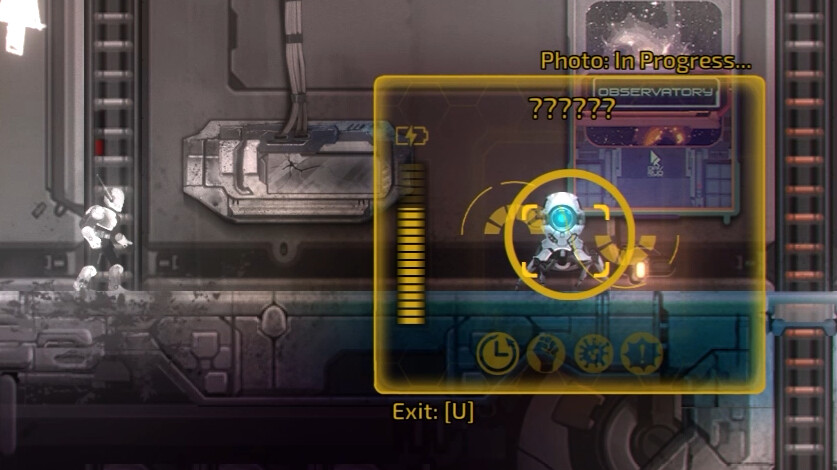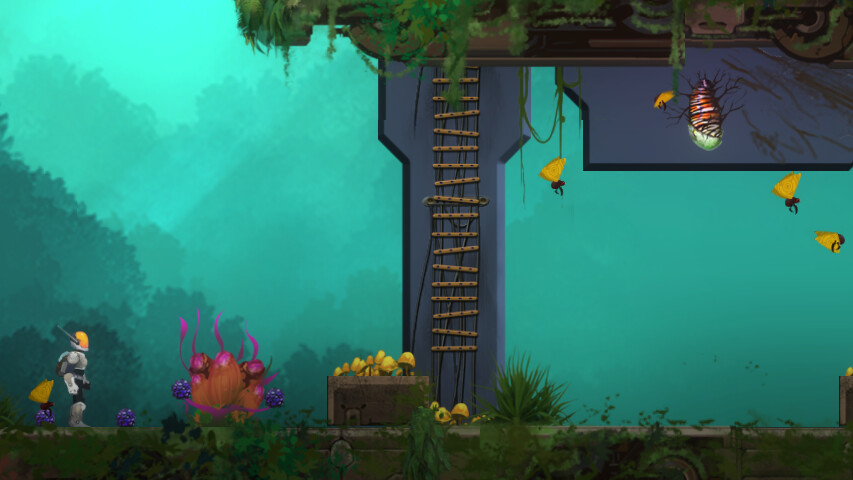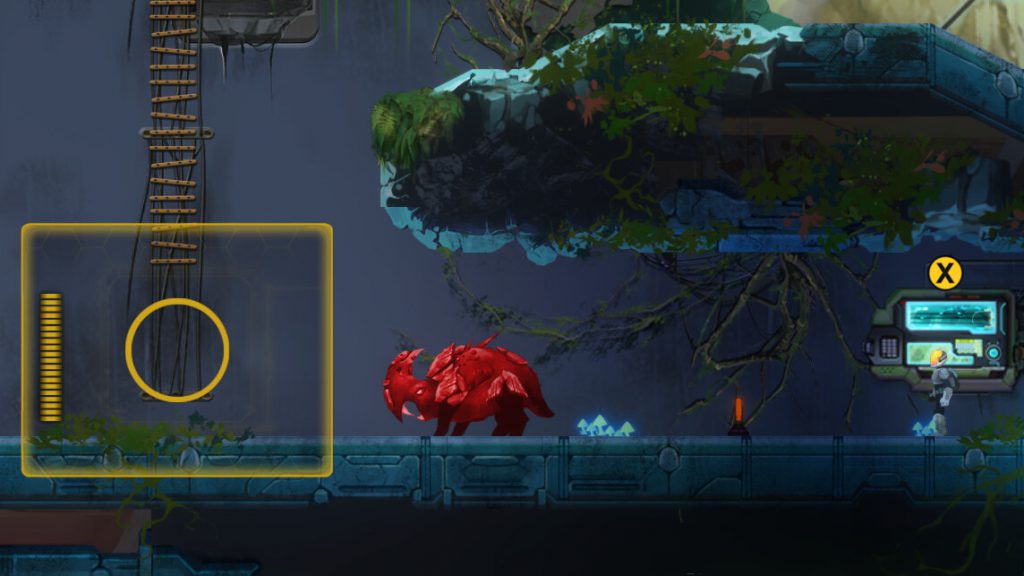Bioframe Outpost combines study, experimentation and exploration into a fantastic 2D-metroidvania
Seven years on from when we saw it last, Starlit Colony is now Bioframe Outpost. It’s the same compelling game, with slightly different skin in a very different time for the industry.
Back when we first played Bioframe Outpost in 2017, we were compelled. At that moment in time the Platformer, Roguelite and Metroidvania genres were all being reinvented, with modern-day genre-staple Dead Cells still an Early Access project exclusive to PC, and games like Hades and Enter the Breach — also notorious for playing with death — far from release.
I suppose that’s an odd mix of games, isn’t it? The reason they’ve been picked is because they’ve all changed the way that people think about death in games: Hades and Dead Cell‘s roguelite progression, Enter the Breach‘s strategic groundhog day with permadeath. People look at games now and when they see that there are threats and opportunities for defeat they don’t expect infinite lives or limited retries like with classic platformers or shooters; Instead they expect death but subsequent gain.
When we talk about games, as well their programming and game logic, there are a lot of different words and phrases that we use to describe them. How you interact with games —from making, to reviewing, to simply playing and enjoying them— equips you with different tools and ways to describe them; Words like Mechanics, States, Phases, Emergent, Procedural, and many, many more. The language we use to describe them changes over times, and so do the trends and buzzwords of the industry, but some things do remain, there are certain constants, even if we now talk about them differently.

Bioframe Outpost is an adventure game, but an adventure game in the way that we call things Metroidvanias these days. It’s also very much an ‘Im-Sim’ (Immersive Simulation) full of combinations, sequences and unexpected learnings. You explore Nova Aurora’s terraforming mission, an optimistic mission to create a new colony for Earth, which was 100% working right up until strange flora and fauna turned up with a bizarre infection in tow.
It all feels familiar from the get-go, with your character awakening from a repeating dream, with only a few memories of their past. It feels like Bioshock, System Shock and their like — a utopia gone wrong and you’re late to the party; There’s a friendly voice through the chaos, but otherwise you’re dealing with fragments of the story littered around the ruins of the colony, optionally piecing it together.

Bioframe Outpost is quick to differentiate itself from its contemporaries though. Your exploration is still gated through keycards, items and light puzzling, however there’s a degree of ecological simulation at play. I mentioned earlier some of the keywords and buzzwords that we use when we talk about games and ‘States’ was slipped right near the start. It’s especially relevant here as each of the creatures and many of the plants littered around Nova Aurora have various states.
For a start, most of them can be, or are, infected by the Skrillions — a dangerous native species — but they can also be scared, angry, stunned and more. These states are defined by how you interact with them. It’s an almost fully pacifist game, with no direct weaponry at your disposal, so a lot of your time will be spent using a selection of items and objects to try and change obstructions into more passive, manageable states.
As a result there’s a lot of information to learn and remember when playing, which is where the camera comes into play. Photography in games can be an amazing mechanic, and there have been some great examples of that through the years ranging from The Good Life‘s monetary system to Viewfinder‘s world-shifting puzzles. Bioframe Outpost‘s photography is the best way to learn about the world around you, and ties into the expansive compendium that you’ll build as you make your way through it. It feels great and the small minigame (keeping the cursor over the focus) takes just the right amount of time that it often feels like a risk to spend such time doing it.
That’s what makes Bioframe Outpost feel unique: The risk that comes with exploring and experimenting with the world around you.

I vividly remember playing it back in 2017, I was excited as I saw the developer toss out a variety of objects that scared and then stunned opponents that would otherwise have simply killed me in one hit; another time he cleared an area of the Skrillion infection, but it freed a bunch of the (very dangerous) creatures — he threw down decoy creatures which completely nullified the dangerous infection and allowed access to another area where, no doubt, equally risky exchanges awaited.
A lot has changed in that time, and Omni-Systems are now self-publishing Bioframe Outpost. More than that, it’s had a visual overhaul, with plenty of tweaks to the artwork and animation that have really levelled the whole thing up. Despite it’s new sheen, it’s still got that perfectly balanced feeling of risky exploration of the unknown that so many other games fail to capture.

In 2017 I said that fans of practical problem solvers or metroidvanias should keep their eyes out for Bioframe Outpost. I sorely believe that fans of genuine, scientific exploration and immersive sims should also be keeping their eyes peeled for it.
Bioframe Outpost will release for Windows PCs later this year.
Comments are closed.